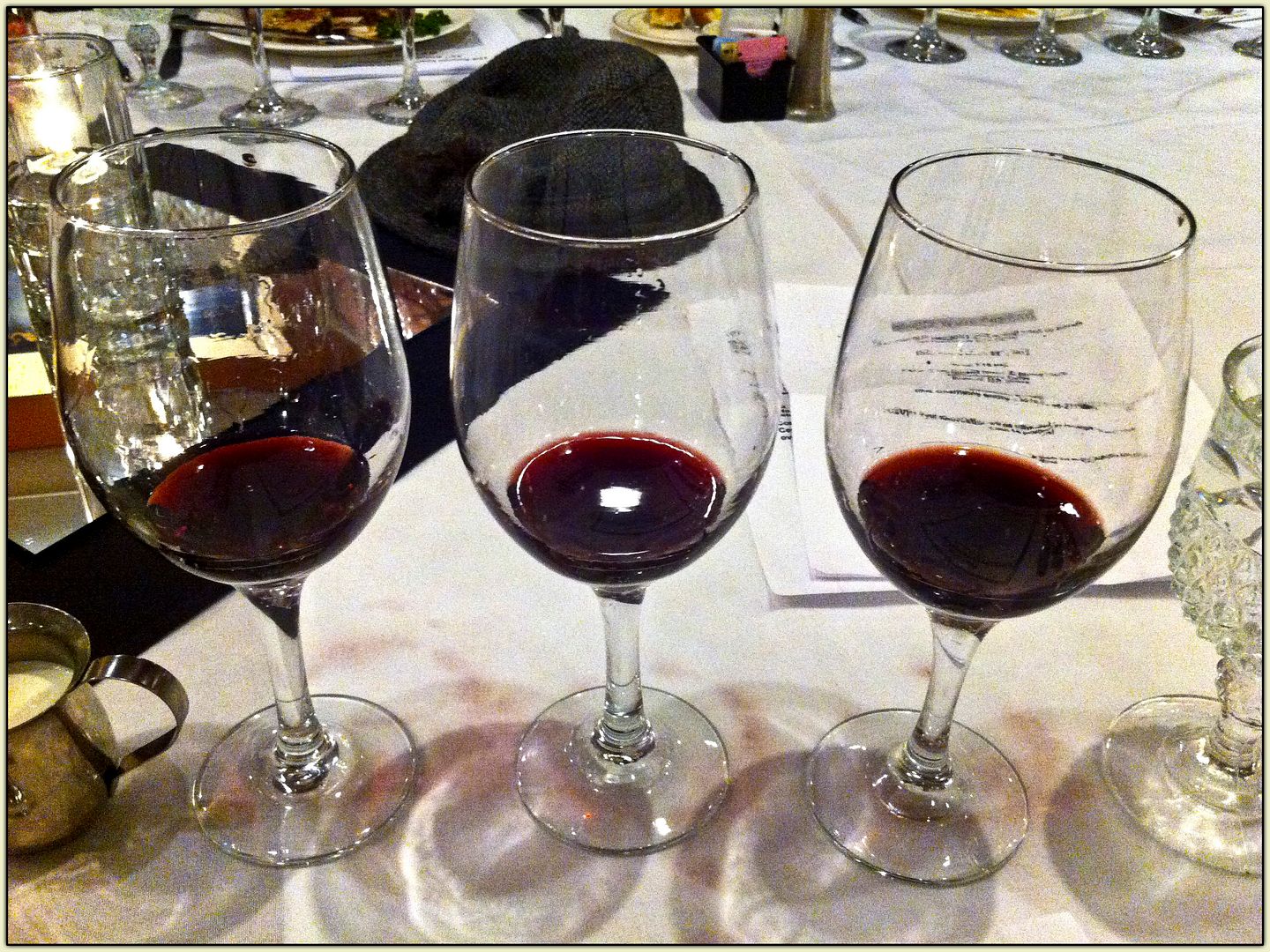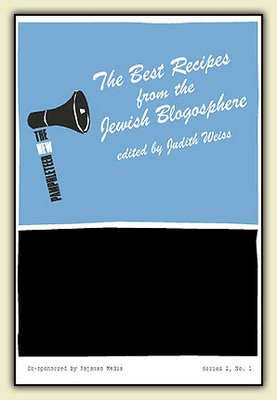Our April Guild event will be this evening at The Shed at Glenwood
and will feature wines from the Rhône region of France, home to great reds like Châteauneuf-du-Pape and Hermitage.
I’m a sucker for a good red wine, and I’ll even put up with a good white wine... so I’m in. So, happily, is Houston Steve. The wine will flow, and so, too, will the conversation, laced with bad puns recounted in an East London accent. Here’s what we’ll be consuming:
Reception Wine
Domaine Achard-Vincent Clairette de Die**
(90% Muscat Blancà Petits Grains, 10% Clairette)
First Flight
2011 Domaine Lafond Lirac Blanc**
(50% Grenache Blanc, 30% Roussanne, 20% Viognier)
2010 Fortia Châteauneuf-du-Pape Blanc
(60% Clairette, 30% Roussanne, 10% Grenache Blanc)
MV Avril “Petit Avril” Blanc*
(98% Marsanne, 2% Chardonnay)
Antipastos and baguettes (olives, cured meats, mozzarella)
Watermelon salad, fromage blanc, candied peanuts, basil
Second Flight
2010 Charbonnière Vacqueyras*
(60% Grenache,40% Syrah)
2011 Boissan Gigondas****
(80% Grenache, 20% Syrah)
2011 Cros de Romet (Alain Boisson) Cairanne**
Duck confit and terrine of local mushrooms, fava bean salad, chèvre
Third Flight
2011 Charbonnière Châteauneuf-du-Pape Vieilles Vignes***
(Grenache from 80 yr old vines and Mourvèdre from 100 yr old vines)
2011 Charbonnière Châteauneuf-du-Pape Mourre des Pedrix**
(Grenache, Syrah, Mourvèdre, Cinsault)
2011 Charbonnière Châteauneuf-du-Pape Brusquières*
(70% Grenache, 30% Syrah)
Smoked pork loin, jalapeño grits, huckleberry sauce, daikon
Brussels sprouts, cider vinegar, bacon, apple
Asparagus, chanterelle and saffron risotto, Parmesan
Fourth Flight
2011 Saint-Cosme Côte-Rôtie**
2009 Matthieu Barret (Coulet) Cornas “Les Terrasses du Serre”****
2010 Domaine du Colombier Crozes-Hermitage “Cuvée Gabby”**
Lagniappe
1999 J. Vidal-Fleurie Côte-Rôtie***
Update:
A few really excellent wines, including the 2009 Coulet Cornas Terrasses du Serre, which displayed a remarkably Bordeaux-like character (Houston Steve compared the bouquet to the aroma of the leather seats of his father’s classic Jaguar, and that’s a good thing.) It was also the most expensive of the evening’s wines, at $79.99 the bottle. But for only $29.99, the 2011 Boissan Gigondas was remarkably intense and aromatic, one that I would be happy to drink again and again.
The food? Well, they had me at duck confit, but the asparagus risotto was quite lovely, as was the loin of treif. All, in all, a very successful evening.
Tuesday, April 29, 2014
Friday, April 25, 2014
THE NOT-SCOTCH SCOTCH
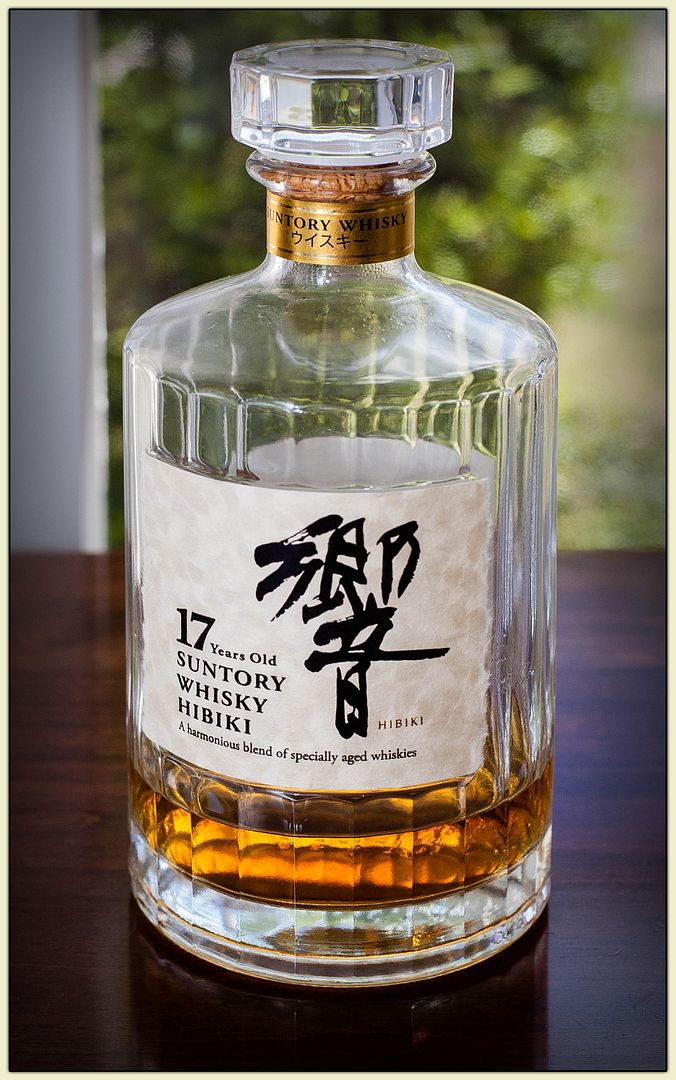
Suntory Hibiki, 17 years old.
Most of us, when we think of whisky - that’s whisky without the “e” - we think of Scotland. That’s as it should be: If you want your whiskey with an “e,” you have to go to Ireland... or across the pond to America, where bourbon and rye reign supreme. Fine creatures all, but not at all the same as the wonderful Water of Life the Scots brew with their smoke and peat.
And then you have Japan, a country with a serious culinary tradition that is not well understood by most Westerners, who pretty much stop at the California roll. Japan, a country in which a single melon, offered at the peak of ripeness and aesthetic perfection, can command well over US$100. Japan, a country that is adept at taking Western ideas and technologies and putting their own unique spin on them. (The fabled Japanese Game Show is but one example.)
You can find no-e whisky in Japan, and I am here to tell you, it can be Mighty Fine.
You’re looking at the remnants of a bottle I purchased at Narita Airport six years ago when I made a pilgrimage to the Land of the Rising Sony with Elder Daughter. After having consumed most of it, I had tucked it into a hidden recess in my Lacquer Liquor Locker, where it remained until just a couple of days ago.
This particular whisky is a blended malt - a combination of several single malts but without neutral spirits. It is extraordinary, smooth with notes of toffee, vanilla, and caramel. Very much like a good single malt Scotch, but subtly, inscrutably different.
A little research has established that to replace this bottle, I would have to spend something on the order of $180 today... well above what I paid for it in Tokyo six years ago. A good investment, sez I.
Tuesday, April 22, 2014
GOLLY GHEE
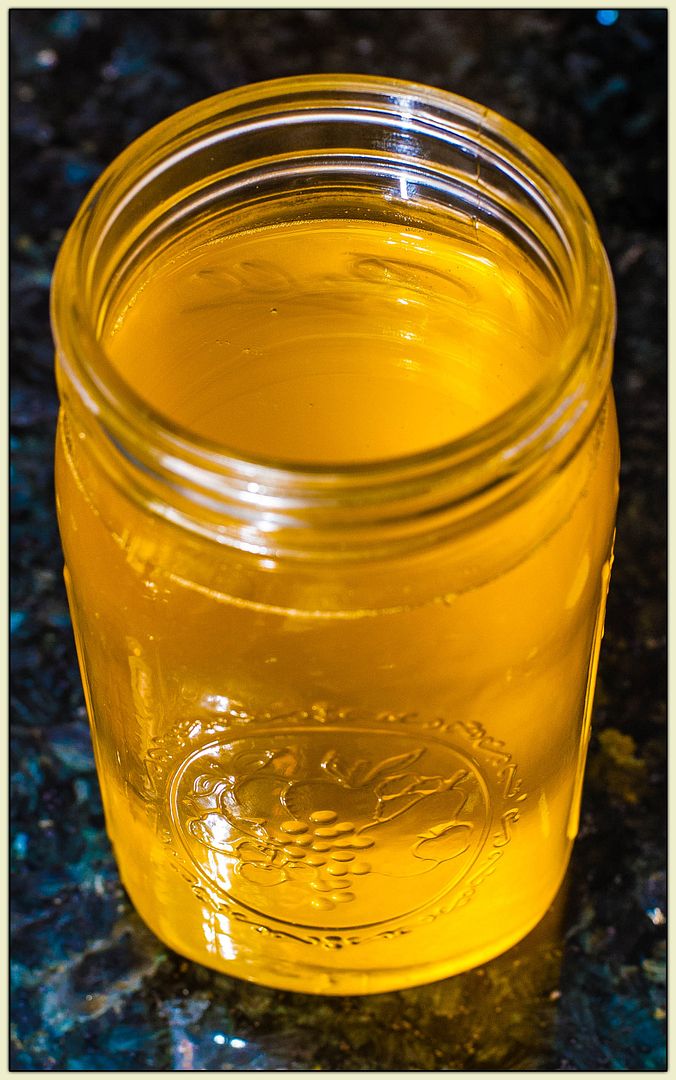
Ghee. Tasty, golden, buttery, nutty ghee.
Sometime last summer, I was taken with the inexplicable urge to cook up a mess of Doro Wat, a fiery Ethiopian chicken stew. (Anything that has onions, chicken, and plenty of red-hot pepper is likely to appeal to me, so perhaps that urge was not quite as inexplicable as it seemed at first blush.)
The recipe came from a site called Nom Nom Paleo, which I had found as a link on my Farcebook feed. While I do not necessarily subscribe to the Paleo eating philosophy, I do know tasty when I see it. The Doro Wat was just that.
To make Doro Wat, the first thing you do is caramelize a bunch of hacked up red onions... and the preferred fat for this job is ghee, which has a high smoking point and which contributes a unique nutty flavor.
With its slightly scary-sounding Indian name, ghee may seem exotic... but it really isn’t. It’s nothing more or less than clarified butter, the same stuff one uses for dipping chunks of lobster. It’s easy enough to make... and waaaay less costly than the prepackaged version you’ll find at the local Whole
You can store ghee at room temperature, but if that makes you nervous, stick it in the fridge. (That’s where I keep it, mainly so I don’t clutter the kitchen counters unnecessarily.)
I made a quart-size batch last August - eight months ago to the day! - and only now has my supply run low. So this afternoon I made enough to replenish my inventory.
Damn, this stuff is delicious. I still like to use a squirt of olive oil for cooking my eggs, but a little bit of ghee gives them a wonderful buttery, nutty flavor. It’s a perfect “something extra” added to sautéed or steamed vegetables. I’ll bet you could use it to doctor up a passel of saltines, too. Golly ghee, whatever did we do without it?
Sunday, April 20, 2014
GIVE ME THAT OLDE TYME ARTISANAL CRAFT BEER
Nacho Punch serves up this video of hipsters ordering beer. Elder Daughter can probably attest to its veracity. Snarfed from the HuffPo, of all places.
Friday, April 18, 2014
SMIT-WIT-FISS
Some people use clocks and calendars to measure the passage of time. I use my SMTWTFS.
Oh, you don’t know what a SMTWTFS is? It’s one of those little plastic thingumabobs that holds your pills. It has a separate box for each day of the week, each box labeled with the initial of the day: thus, SMTWTFS. I pronounce it “Smit-Wit-Fiss.”
Every evening, I pop open my SMTWTFS and remove that day’s supply of Old Man Medicine: baby aspirin, statin pill, fish oil capsules, vitamin D... plus an anti-allergy pill in the springtime, when pollen lies thick on the land. I swallow the small handful of pills and capsules in one gulp, chased by a shot of water straight from the bathroom tap. (She Who Must Be Obeyed is appalled by the fact that I drink bathroom water, believing that it somehow becomes contaminated by Poop-Cooties by virtue of its passage through pipes located within fifty feet of a Water-Closet. Go figure.)
Once all the boxes are empty, it is of course time to reload. I fill each of the seven compartments with my various medicaments, taking that evening’s dose directly out of the bottles. Thus I only have to recharge the SMTWTFS once every eight days. That’s efficiency for you!
And thus I gauge the passage of my days, eight at a time. O, how they fly in their octal progression, alas!
Oh, you don’t know what a SMTWTFS is? It’s one of those little plastic thingumabobs that holds your pills. It has a separate box for each day of the week, each box labeled with the initial of the day: thus, SMTWTFS. I pronounce it “Smit-Wit-Fiss.”
Every evening, I pop open my SMTWTFS and remove that day’s supply of Old Man Medicine: baby aspirin, statin pill, fish oil capsules, vitamin D... plus an anti-allergy pill in the springtime, when pollen lies thick on the land. I swallow the small handful of pills and capsules in one gulp, chased by a shot of water straight from the bathroom tap. (She Who Must Be Obeyed is appalled by the fact that I drink bathroom water, believing that it somehow becomes contaminated by Poop-Cooties by virtue of its passage through pipes located within fifty feet of a Water-Closet. Go figure.)
Once all the boxes are empty, it is of course time to reload. I fill each of the seven compartments with my various medicaments, taking that evening’s dose directly out of the bottles. Thus I only have to recharge the SMTWTFS once every eight days. That’s efficiency for you!
And thus I gauge the passage of my days, eight at a time. O, how they fly in their octal progression, alas!
A COPROLOGICAL QUERY
Betimes a Food-Baby may be born
A-studded with golden grains of corn.
So, too, when the Elephant drops his load
Alongside of the jungle road,
Would it be crazy? Would it just be nuts?
To imagine it decorated with peanuts?
And doth it make the Grizzly merry
To see his scat festooned with berries?
A-studded with golden grains of corn.
So, too, when the Elephant drops his load
Alongside of the jungle road,
Would it be crazy? Would it just be nuts?
To imagine it decorated with peanuts?
And doth it make the Grizzly merry
To see his scat festooned with berries?
Thursday, April 17, 2014
SLIV ’N’ LIV
“If you are Jewish, this is the spirit that speaks to you. Drink enough and it speaks for you.” - Edward Serotta, regarding slivovitz
The eight-day festival of Passover presents a few challenges to those of us Red Sea Pedestrians who happen to enjoy the occasional (or frequent) Whisky-Drink... mainly because products made from grain, with the exception of matzoh, are verboten. That means that whisky - Scotch, bourbon, rye, and their happy cousins - is not on the drink card. It also eliminates most white spirits as well as beer. (Potato vodka is OK, as is rum... at least in theory.)
That unhappy gap is filled perfectly by slivovitz, an eau-de-vie distilled from Damson plums. It’s a popular item in eastern Europe as well as the Balkans, and many brands are officially certified to be kosher for Passover use. Perfect!
Well, maybe not perfect. There’s plenty of inferior slivovitz out there, and the bad stuff bears a remarkable resemblance, taste-wise, to Ronsonol lighter fluid. Also, it’s powerful. Most of the brands I’ve seen are bottled at or around 100 proof, not for the faint of heart. Nevertheless, there are excellent versions available if you’re willing to look around. Right now we’re working our way through a bottle of R. Jelinek’s Silver Slivovitz, a higher-end Czech product that is competitive with any of the finer eaux-de vie. Kirschwasser, meet slivovitz. Sliv, kirsch.
Gee, I'll bet it’s dandy with a bit of my homemade grenadine and a squirt of lemon. Hmmm.
Now: What to eat while you’re swilling sliv? Why, chopped liver, of course! Gehackte leber, as we might call it in Yiddish. The high-test character of slivovitz is perfect for cutting through the unctuousness of fine chopped liver.
You say you’re not a chopped liver fan? Well, it’s not for everyone... and neither are oysters, Champagne, and caviar. (OK, chopped liver is somewhat, ahhh, earthier than these other examples, but you can call it pâté de foie de volaille if you want it to sound classy.) If you don’t like liver, or if you have a loathing for organ meats in general, then chopped liver may not be for you.And that’s OK: More for me.
Although you can find perfectly decent chopped liver in your supermarket’s kosher section, this year I made my own. It’s easy enough.
Start with about a pound of chicken livers. (If you prefer, use beef liver. Weirdo.) Remove any connective tissue and cut into medium chunks. Melt about a tablespoon of chicken schmaltz in a large skillet and sauté the livers until cooked through. Set aside.
Now, hack up a couple of yellow onions: You should have about four cups of chopped onion. Melt four tablespoons of chicken schmaltz in that skillet and cook the onions over medium-low heat until very soft and just slightly brown. This may take half an hour, thereabouts - you want to do it low and slow to get the onions nice and soft and caramelized.

Onions cooking gently in schmaltz. Goose schmaltz. Yummy, yummy goose schmaltz.
Now, after the onions and livers have cooled down a bit, run them through the coarse plate of a meat grinder. Then run the mixture through again, this time through the fine plate. (Alternatively, chop them up well in a bowl with a hockmesser - the half-moon shaped chopper known to Italian cooks as the mezzaluna.) Season with plenty of salt and freshly ground black pepper, and add some more schmaltz if it’s too dry. Presto! You have gehackte leber.
Some people like to add chopped egg to their livers. If you are this type of person, feel free to chop up one or two hard-boiled eggs and combine with the liver mixture. I elected to do without the egg, and I was extremely satisfied with the results.
Of course, I had a secret weapon. In lieu of chicken schmaltz, I used goose schmaltz, which is far richer and more flavorful. Having a goodly amount of goose schmaltz sitting in my freezer is a fringe benefit of my custom of roasting a goose once a year. (If you have no goose schmaltz near to hand, duck fat works beautifully.)
Yes, this batch of chopped liver was, dare I say, epic. (SWMBO might disagree, but then again, she does not partake of any sort of liver.) And, enjoyed with a shot of slivovitz - sliv ’n’ liv! - it was even better than epic: It was epicurean.
The eight-day festival of Passover presents a few challenges to those of us Red Sea Pedestrians who happen to enjoy the occasional (or frequent) Whisky-Drink... mainly because products made from grain, with the exception of matzoh, are verboten. That means that whisky - Scotch, bourbon, rye, and their happy cousins - is not on the drink card. It also eliminates most white spirits as well as beer. (Potato vodka is OK, as is rum... at least in theory.)
That unhappy gap is filled perfectly by slivovitz, an eau-de-vie distilled from Damson plums. It’s a popular item in eastern Europe as well as the Balkans, and many brands are officially certified to be kosher for Passover use. Perfect!
Well, maybe not perfect. There’s plenty of inferior slivovitz out there, and the bad stuff bears a remarkable resemblance, taste-wise, to Ronsonol lighter fluid. Also, it’s powerful. Most of the brands I’ve seen are bottled at or around 100 proof, not for the faint of heart. Nevertheless, there are excellent versions available if you’re willing to look around. Right now we’re working our way through a bottle of R. Jelinek’s Silver Slivovitz, a higher-end Czech product that is competitive with any of the finer eaux-de vie. Kirschwasser, meet slivovitz. Sliv, kirsch.
Gee, I'll bet it’s dandy with a bit of my homemade grenadine and a squirt of lemon. Hmmm.
Now: What to eat while you’re swilling sliv? Why, chopped liver, of course! Gehackte leber, as we might call it in Yiddish. The high-test character of slivovitz is perfect for cutting through the unctuousness of fine chopped liver.
You say you’re not a chopped liver fan? Well, it’s not for everyone... and neither are oysters, Champagne, and caviar. (OK, chopped liver is somewhat, ahhh, earthier than these other examples, but you can call it pâté de foie de volaille if you want it to sound classy.) If you don’t like liver, or if you have a loathing for organ meats in general, then chopped liver may not be for you.And that’s OK: More for me.
Although you can find perfectly decent chopped liver in your supermarket’s kosher section, this year I made my own. It’s easy enough.
Start with about a pound of chicken livers. (If you prefer, use beef liver. Weirdo.) Remove any connective tissue and cut into medium chunks. Melt about a tablespoon of chicken schmaltz in a large skillet and sauté the livers until cooked through. Set aside.
Now, hack up a couple of yellow onions: You should have about four cups of chopped onion. Melt four tablespoons of chicken schmaltz in that skillet and cook the onions over medium-low heat until very soft and just slightly brown. This may take half an hour, thereabouts - you want to do it low and slow to get the onions nice and soft and caramelized.

Onions cooking gently in schmaltz. Goose schmaltz. Yummy, yummy goose schmaltz.
Now, after the onions and livers have cooled down a bit, run them through the coarse plate of a meat grinder. Then run the mixture through again, this time through the fine plate. (Alternatively, chop them up well in a bowl with a hockmesser - the half-moon shaped chopper known to Italian cooks as the mezzaluna.) Season with plenty of salt and freshly ground black pepper, and add some more schmaltz if it’s too dry. Presto! You have gehackte leber.
Some people like to add chopped egg to their livers. If you are this type of person, feel free to chop up one or two hard-boiled eggs and combine with the liver mixture. I elected to do without the egg, and I was extremely satisfied with the results.
Of course, I had a secret weapon. In lieu of chicken schmaltz, I used goose schmaltz, which is far richer and more flavorful. Having a goodly amount of goose schmaltz sitting in my freezer is a fringe benefit of my custom of roasting a goose once a year. (If you have no goose schmaltz near to hand, duck fat works beautifully.)
Yes, this batch of chopped liver was, dare I say, epic. (SWMBO might disagree, but then again, she does not partake of any sort of liver.) And, enjoyed with a shot of slivovitz - sliv ’n’ liv! - it was even better than epic: It was epicurean.
Monday, April 14, 2014
SHARP AS A MATZOH
“By the pricking of my thumbs, something wicked this way comes.” - Shakespeare
“Merely touch it with your thumbs: Matzoh makes a lot of crumbs.” - Elisson
When my Daddy, the late Eli (hizzownself), wished to compliment someone, he would, like as not, state that that person looked “sharp as a matzoh and twice as crumby.”
Nonsense, sure, but as with all good nonsense, there is more than a grain of truth in it... or in this case, a crumb of truth. For there is nothing as crumby as matzoh.
We don’t call it the Bread of Affliction for nothing, yo.
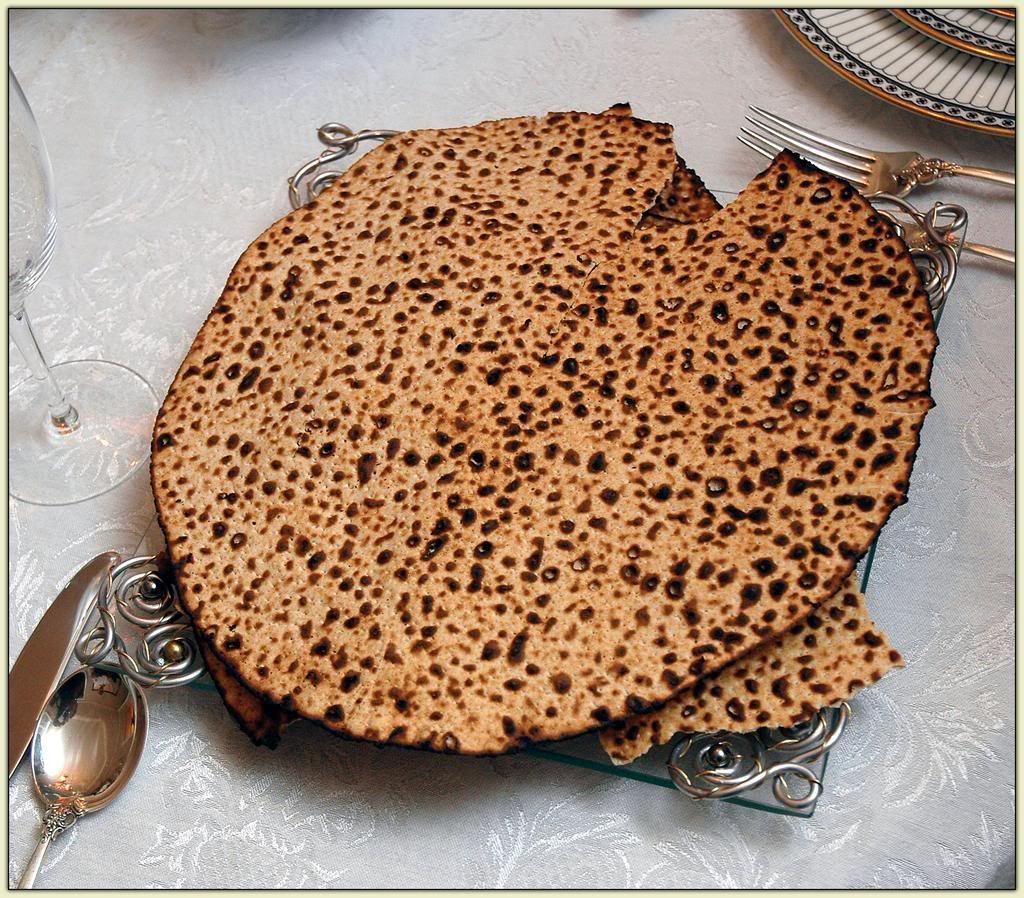
Handmade shmura matzoh.
Not only is it famously constipation-inducing, but matzoh - the unleavened bread consumed by us Red Sea Pedestrians during the eight-day Passover festival that begins at sundown this evening - is incredibly crumby stuff. Simply look at it sideways, and little shards will break off, working their way into the tablecloth, your clothing, and any nearby floor. This time of year, our house is filled with Matzoh Detritus. Crumbs.
You cannot avoid them. They are everywhere. Matzoh-crumbs get onto every horizontal surface. They stick to many vertical ones, too, owing to their light weight and grabby little edges. Try to pick one up: Hydra-like, it multiplies, breaking into smaller, harder-to-pick-up chunks.
Funny thing about matzoh. It’s really not bad, this Unleavened Bread. Every year, I enjoy a Matzoh Honeymoon for the first few days of Pesach. We eat it happily, with charoset (the traditional relish of apples, nuts, and wine that is reminiscent of the mortar with which the ancient Israelites built Pharaoh’s cities), with horseradish, with cheese, or slathered with butter. But after five or six days, the honeymoon is over, and crumbs - those fucking crumbs! - are everywhere.
It’s traditional to clean the house thoroughly before Passover, in order to ensure the complete absence of leaven. But it’s at least as necessary to have another thorough cleaning after the holiday is over, in order to remove the quadrillion or so little matzoh-smithereens that manage to adhere to every surface.
“Bread of affliction,” indeed. Oy.
[Adapted from a post originally published on April 11, 2009.]
Monday, April 7, 2014
THE COOKIE KID: A 100-WORD ORIGIN STORY
Fidgeting, forehead glazed with sweat, Joe sat across from Max Schwartz, the vaudeville impresario, his toddler son cradled in his lap.
Nervous? Why wouldn’t he be? Max held Joe Junior’s future in his hands. Junior didn’t seem to be concerned, though. He sat quietly until his father asked him to demonstrate some of his dancing skills.
Max gnawed on a macaroon as he watched. The kid was good. Way better than good.
“We’ll need to give him a stage name,” announced Max. Absently regarding the half-eaten coconut cookie in his hand, he suddenly brightened. “That’s it!” he cried. “Mickey Rooney!”
[Mickey Rooney, who began his decades-long acting career at the tender age of seventeen months, passed away yesterday at the age of 93. Requiescat in pace, Andy Hardy!]
Nervous? Why wouldn’t he be? Max held Joe Junior’s future in his hands. Junior didn’t seem to be concerned, though. He sat quietly until his father asked him to demonstrate some of his dancing skills.
Max gnawed on a macaroon as he watched. The kid was good. Way better than good.
“We’ll need to give him a stage name,” announced Max. Absently regarding the half-eaten coconut cookie in his hand, he suddenly brightened. “That’s it!” he cried. “Mickey Rooney!”
[Mickey Rooney, who began his decades-long acting career at the tender age of seventeen months, passed away yesterday at the age of 93. Requiescat in pace, Andy Hardy!]
Subscribe to:
Posts (Atom)

